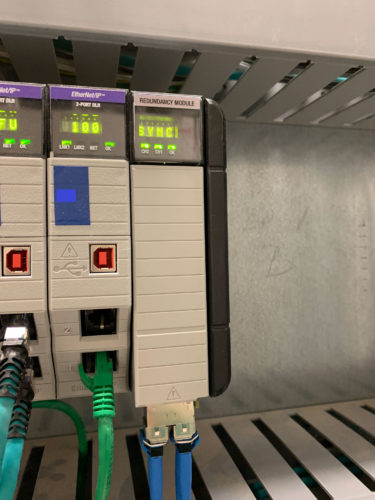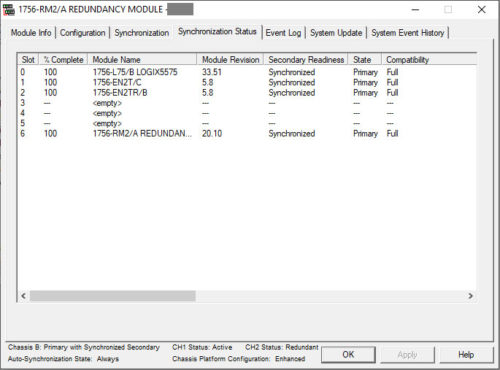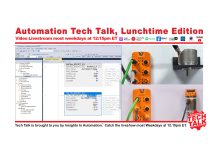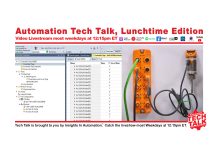
You might be very happy with NOT touching your Logix 5561 redundant controllers running at firmware version sixteen, and I don’t wish to persuade you otherwise.
But if you are thinking about upgrading to something a little more recent, then hopefully this article will provide some insight into what to expect in your upgrade path to the latest and greatest, version 33.
Here are some key takeaways that I have noted and hopefully they will be of help to you as well.
1) 5570 & 5580 Controllers Have Different Redundancy Firmware Kits
Although, the L7x line of controllers and the L8x line of controllers are very similar in appearance and configuration, they are different generations of controllers.
The L8x controller for instance, contains separate CPU’s for logic, communications, I/O etc. while the L7x line of controllers uses the traditional configuration with a single processor and overhead time slice for communications etc.
For redundant controller configuration with the L7x line of controllers, you will need to use the “33.051 Enhanced_Kit1”
For redundant controller configuration with the L8x line of controllers, you will need to use the “33.011 Enhanced_Kit1”
2) On-Process Updates Have a Very Specific Order
If you wish to perform an “on-process” redundancy update (upgrading controller and other module firmware without taking the process controllers down) you must go in a specific order of firmware through the upgrade process.
The revision order is 20.05x – 24.053 – 30.051 – 31.052 – 32.051 – 33.051(L7x).
You cannot skip revisions. So, if you are at version twenty or twenty four and want to go to version thirty three, on process, it will take you most of the day.
3) View the Release Notes for Communication Module Revisions
The first step before your upgrade should be to view the release notes for each release before going to that release.
First, determine if every communication module (ControlNet, EtherNet etc.) and Redundancy Module in your controller chassis is compatible with the next release and what each module firmware should be flashed to in that release.
Having this mapped out with a plan will help to make the upgrade go smoothly.

4) View the “ControlLogix 5570/5580 Redundancy Update and Module Replacement Guidelines” Document from Rockwell
This publication will give you the prerequisites for your upgrade, considerations and the steps to follow to perform the on-process upgrades.
5) The Redundancy Module Configuration Tool (RMCT) must be uninstalled before the newest version can be installed
The latest RMCT for version 33 redundancy is 8.5.1.0 and you must uninstall the previous version before installing this version.
If you have performed upgrades before, you likely know this is important, but in case you have not run into this before, you will need to note this in the Redundancy Update and Module Replacement Guidelines book.
6) If Using Redundancy with L8x Controllers, see Product Notice 2021-02-002:
Product Notice 2021-02-002 – ControlLogix 5580 Redundancy Unexpected Power-Up Handler Fault (Type 1 Code 1) with V33.011 – gives notice of a particular anomaly when using a fault handler program in a ControlLogix 5580 redundancy system.
References:
- Publication 1756-RM010G-EN-P ControlLogix 5570 redundancy update and module replacement guidelines
- Rockwell Product Compatibility and Download Center (PCDC) – Release Notes
Conclusion
Sometimes, we must wade through the waters of documentation to find all the pieces that we need to complete the puzzles in automation.
If you are looking at upgrading your ControlLogix Redundancy System to the latest and greatest, hopefully you picked up some good points here today.
Written by Brandon Cooper
Senior Controls Engineer and Freelance Writer
Have a question? Join our community of pros to take part in the discussion! You'll also find all of our automation courses at TheAutomationSchool.com.
Sponsor and Advertise: Get your product or service in front of our 75K followers while also supporting independent automation journalism by sponsoring or advertising with us! Learn more in our Media Guide here, or contact us using this form.
- Things I’ve Learned Travelling for Work (2) - July 17, 2025
- Things I’ve Learned Travelling for Work (1) - July 10, 2025
- Emulating an Allen-Bradley E3 or E3 Plus - June 30, 2025

Discover more from The Automation Blog
Subscribe to get the latest posts sent to your email.






